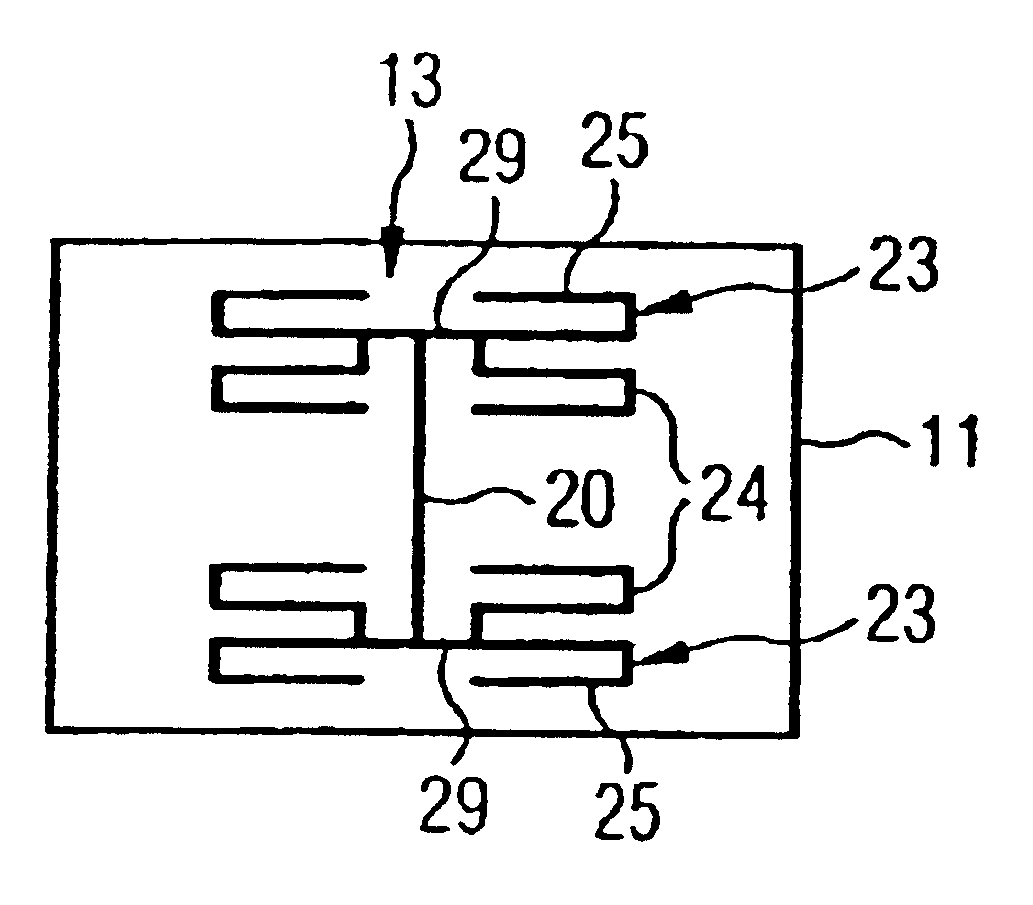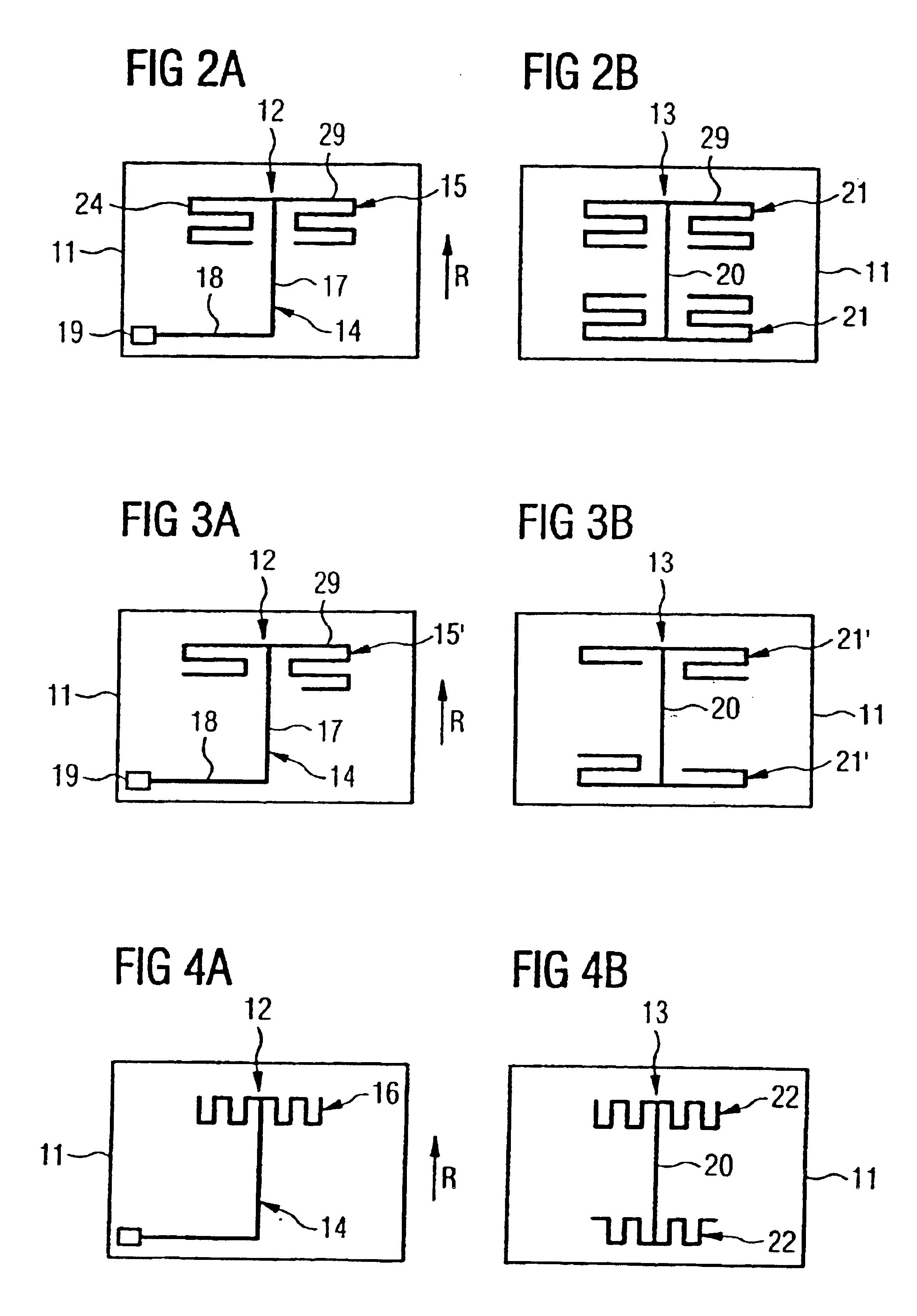Antenna for a communication terminal
a technology for communication terminals and antennas, which is applied in the direction of resonant antennas, elongated active elements, and protection materials radiating elements, etc. it can solve the problems of unavoidable capacitance to ground and user hand detuning, so as to increase the “height” of the antenna and improve the current distribution of the antenna
- Summary
- Abstract
- Description
- Claims
- Application Information
AI Technical Summary
Benefits of technology
Problems solved by technology
Method used
Image
Examples
Embodiment Construction
Since the main field of use of the antennas 10 according to the present invention is in the field of mobile telephones, wherein it offers particularly great advantages, particularly because of the problems of the antenna being covered by the hand of the user, the following exemplary embodiments are based on antennas for mobile telephones. However, it is pointed out again that, naturally, the use of such antennas is not restricted to mobile telephones.
FIG. 1 shows such a typical mobile telephone 1 with a casing 2 and an integrated antenna 10 according to the present invention. The other components of the mobile telephone 1 are shown only partially and diagrammatically. On the one hand, the mobile telephone exhibits a main circuit board 3 on which the earphone capsule 6 is arranged in the upper area and below that the display 5. Below the display 5, there is the keypad (not shown). At the rear of the main circuit board 3, the battery pack 4 is arranged, among other things. The main ci...
PUM
 Login to View More
Login to View More Abstract
Description
Claims
Application Information
 Login to View More
Login to View More - R&D
- Intellectual Property
- Life Sciences
- Materials
- Tech Scout
- Unparalleled Data Quality
- Higher Quality Content
- 60% Fewer Hallucinations
Browse by: Latest US Patents, China's latest patents, Technical Efficacy Thesaurus, Application Domain, Technology Topic, Popular Technical Reports.
© 2025 PatSnap. All rights reserved.Legal|Privacy policy|Modern Slavery Act Transparency Statement|Sitemap|About US| Contact US: help@patsnap.com



